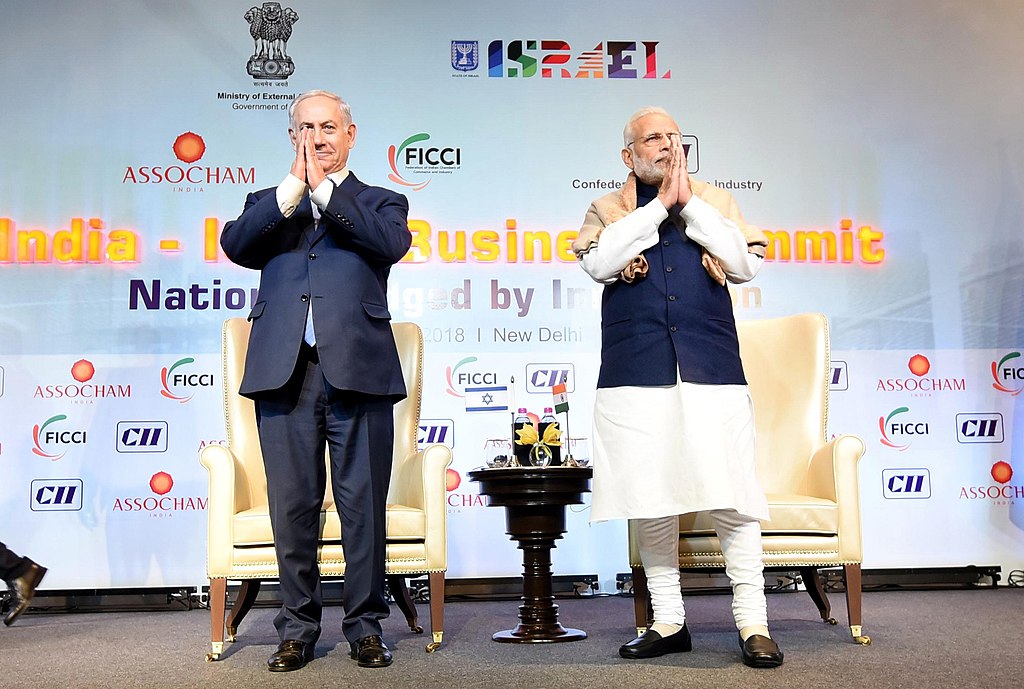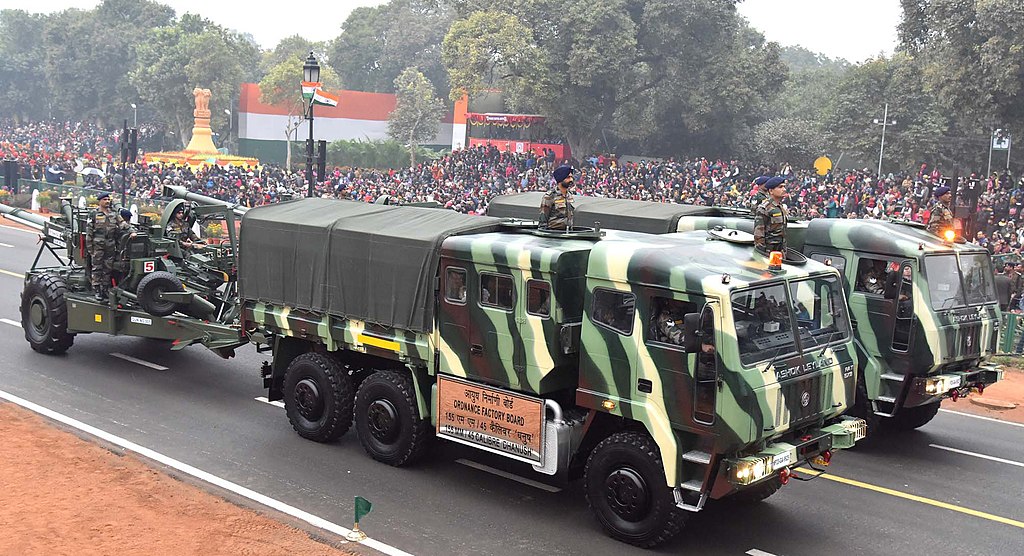
Indian Prime Minister Shri Narendra Modi and Israeli Prime Minister Benjamin Netanyahu at the India-Israel Business Summit, in New Delhi on January 15, 2018
“Consequently, in light of the ongoing conflicts in Ukraine and now in Gaza, Russia and Israel, he warned, could well end up either failing to meet India’s numerous materiel requirements or delaying deliveries interminably.”
Two months after Russia began its invasion of Ukraine in 2022, India began to experience delays in deliveries of weapons and equipment from Russia. The Israeli operations in Gaza have only compounded the delays.[i] The accompanying excerpted article from the independent English-language news website The Wire reports on the ongoing delays of military equipment from not only Russia, but now Israel, as it carries out its Gaza operation. The article examines how two of India’s main suppliers of weapon systems and equipment, Russia and Israel, are currently engaged in conflicts. It also notes how Israel has not provided India with major platforms or systems like Russia has but provided components for various systems as well as different munitions. These components have been implemented into systems of all branches of the Indian Armed Forces making it difficult to quantify the number of Israeli systems in Indian platforms. The author of the article ends by mentioning that Russia’s and Israel’s conflicts could motivate India to pursue alternatives to continue building its defense industry. While the article does not offer specifics on how India will deal with the delays, the situation may push India to seek other partners to find short and long-term solutions to grow the country’s defense industry.
Sources:
Rahul Bedi, “Ukraine and Gaza May Impact Russia and Israel’s Ability to Sustain Materiel Exports to India,” The Wire (an independent English-language news website in India), 14 October 2023. https://thewire.in/security/ukraine-gaza-materiel-exports-to-india
The involvement of India’s two principal materiel providers – Russia and Israel – in their respective wars and conflicts has the potential to impact the inflow of defence equipment supplies into the country, warned a cross-section of service veterans and military analysts.
…This equalled a whopping 55% or so of Russian and Israeli military imports for India…
Retired Brigadier Rahul Bhonsle of the Security Risks Asia consultancy in Delhi said that while the BJP-led government had launched the atamnirbhar initiative to indigenise Indian military needs, Delhi still topped the global list of defence equipment importers.
Consequently, in light of the ongoing conflicts in Ukraine and now in Gaza, Russia and Israel, he warned, could well end up either failing to meet India’s numerous materiel requirements or delaying deliveries interminably.
Unlike Russia, Israel does not provide India any major platforms, but supplies critical and innovative force multipliers like unmanned aerial vehicles (UAV), assorted missile, guidance and avionics systems, precision-guided munitions, diverse sensors and surveillance and targeting radars, amongst other equipment.
Most of this was fitted onto combat aircraft, helicopters, warships, submarines and armoured vehicles.
But such equipment and component diversity made it difficult to quantify the exact or even near-precise percentages of Israeli military equipment in service with India’s armed forces.
…(though) Israel’s ongoing war in Gaza against Hamas was ‘unlikely’ to impact military hardware and spares supplies to India in the short term, they cautioned that an extended conflict could jeopardise deliveries.
…Once diplomatic ties with Israel were instituted under Prime Minister Narasimha Rao in 1992, the two sides fast-tracked their strategic and defence relationship based on mutual security and commercial interests.
Israel, for its part, rightly perceived a commercial opportunity, while India looked upon Tel Aviv as a reliable and ‘no-questions-asked’ materiel provider, especially of varied ammunition and missile systems which India’s military badly lacked, and still does.
Nonetheless, it still took another six-odd years and the BJP’s ascent to power under Prime Minister Atal Behari Vajpayee for Israel’s defence machinery to definitively establish itself in India…
However, it was the 11-week long Kargil war with Pakistan in 1999 that catapulted Israel’s defence industry to centre stage domestically.
As the seriousness of the deadly conflict unfolded, commercially savvy Israel dug deep into its military reserves to supply India high-end hardware, especially badly-needed 155mm rounds for its FH-77B Bofors howitzers, laser-guided munitions and other ordnance that contributed largely to the Pakistan Army vacating the mountainous region’s siege and ending hostilities.
Two decades later, the Indian Air Force’s (IAF’s) Mirage 2000H fighters in their attack on a Pakistani militant training camp at Balakot in Pakhtunkhwa in February 2019, fired specifically configured Israeli Crystal Maze Mk2 missiles (variants of the Rafael Advanced Defence Systems AGM-142 Raptor Have Nap/Popeye missile)…
…And though India had reduced its dependence on Russia for military equipment by some 33% between 2011 and 2020 in an effort to diversify its network of materiel suppliers, switching entirely to alternate sources was not an option military-planners in Delhi desired, as it entailed colossal expenditure, reworked infrastructure, inordinate delays and doctrinal changes.Perhaps the individual wars in Ukraine and Gaza and the constraints these could impose on Russia and Israel’s ability to export defence equipment may end up providing alternative routes to sustain and modernise India’s military through indigenous efforts.
Notes:
[i] For more information on India’s issues with deliveries of ordnance since the war in Ukraine began, see: Matthew Stein “India Takes a Step Away from the Russian Defense Industry,” Journal of Indo-Pacific Affairs, 31 July 2023. https://www.airuniversity.af.edu/JIPA/Display/Article/3475660/india-takes-a-step-away-from-the-russian-defense-industry/
Image Information:
Image: Indian Prime Minister Shri Narendra Modi and Israeli Prime Minister Benjamin Netanyahu at the India-Israel Business Summit, in New Delhi on January 15, 2018
Source: https://commons.wikimedia.org/wiki/File:The_Prime_Minister,Shri_Narendra_Modi_and_the_Prime_Minister_of_Israel,_Mr._Benjamin_Netanyahu_at_the_India-Israel_Business_Summit,_in_New_Delhi_on_January_15,_2018(2).jpg
Attribution: Government Open Data License – India (GODL)

